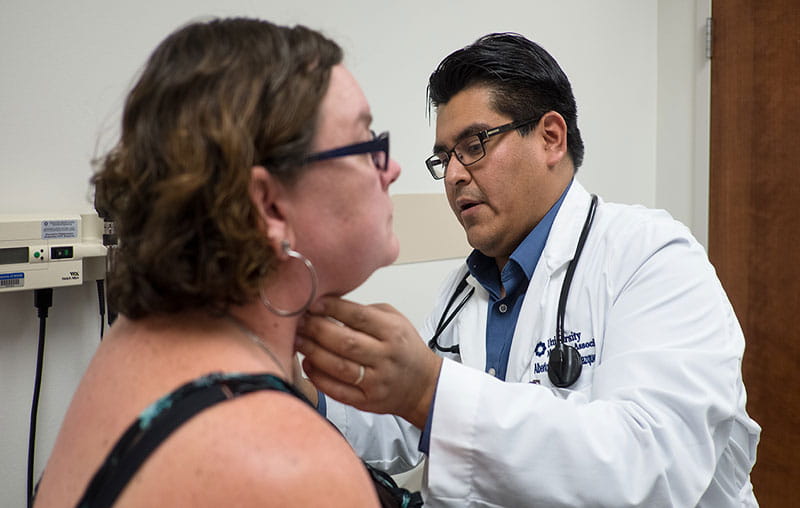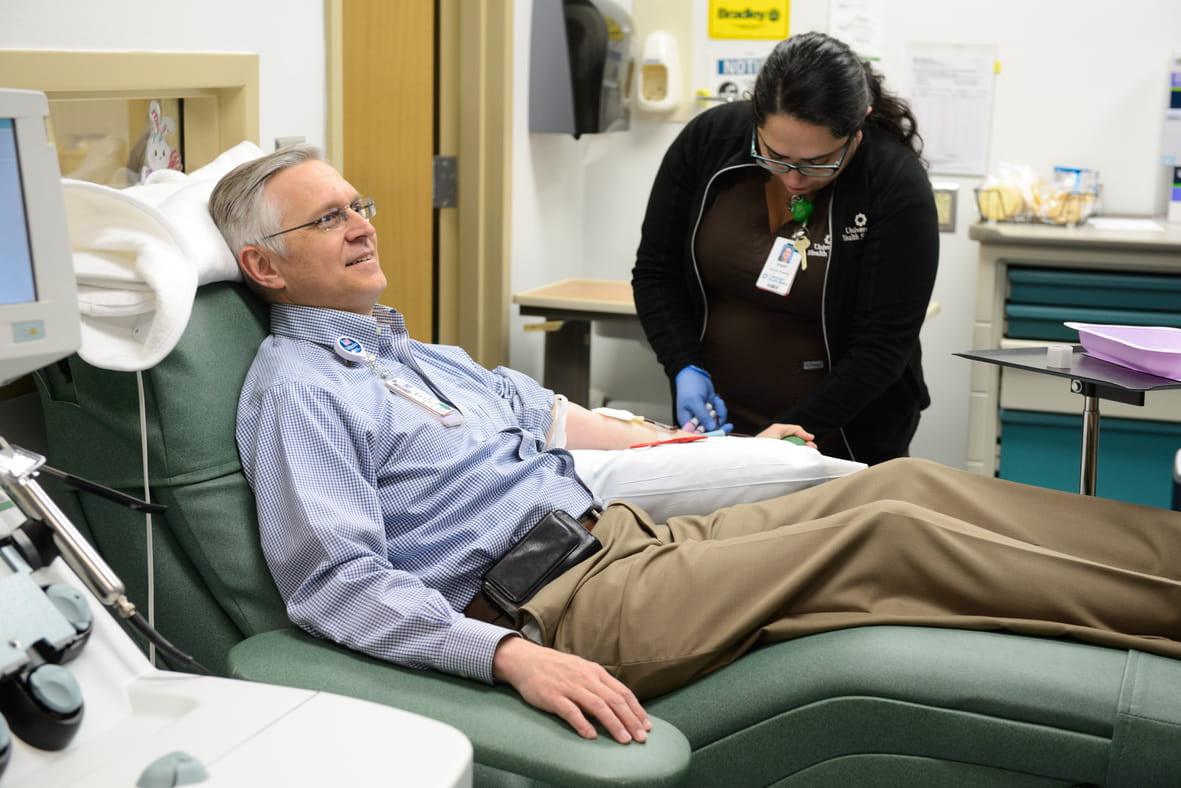When you hear about breast cancer, you probably think about it as a women’s health issue. While it primarily affects women, though, male breast cancer is also possible.
Most campaigns for Breast Cancer Awareness Month focus on encouraging women to undergo regular preventive screenings or to learn about their risk factors for breast cancer. That’s for good reason — 1 in 8 American women will be diagnosed with breast cancer in their lifetime.
While it’s much less common, men can also be diagnosed. The American Cancer Society estimates that more than 300,000 new cases of breast cancer will be diagnosed in 2023 alone. According to the Centers for Disease Control and Prevention, approximately 3,000 of those cases will be male breast cancer.
Here’s what you should know.
1. There are two main types of male breast cancer
There are multiple kinds of breast cancer, and two types are most common in men. Invasive ductal carcinoma begins in the ducts of the breast and then grows outward into other parts of the breast tissue. This type of male breast cancer can spread to other parts of the body.
Ductal carcinoma in situ is also commonly diagnosed in men. DCIS is defined as a breast disease that may turn into invasive breast cancer, because the cancer cells are only in the ducts.
While less common, inflammatory breast cancer and Paget disease of the nipple can also affect men.
2. Survival rates for male breast cancer are lower
The five-year survival rates for men are slightly lower than those for women, but still high for cases of male breast cancer caught at the earliest stage. Localized breast cancer has a five-year survival rate of 95% for men, compared with 99% for women.
The survival rates for regional breast cancer are similarly comparable — the five-year survival rate for men is 84%, compared with 86% for women.
As breast cancer metastasizes, there’s a bigger discrepancy in survival rates between men and women. The five-year survival rate for men with a distant stage of breast cancer is 20%, compared with 30% for women.
It’s important to note that the overall survival rate for men is lower than women, in large part because male breast cancer is often detected in an advanced stage.
3. A family history of breast cancer increase the risk of male breast cancer
The risk factors for male breast cancer are very similar to those for breast cancer in women. Having a family medical history of breast cancer, for example, increases the risk for both men and women.
A man’s risk for developing breast cancer increases if he has one or more female relatives who have had breast cancer. The risk of male breast cancer is also higher if the man has certain genetic mutations, such as BRCA1 or BRCA2.
4. Breast cancer is more common in older men
The risk of breast cancer is higher in older adults, with most cases of male breast cancer found after age 60.
Along with advanced age, there are other factors that can increase the risk of breast cancer in men. Risk factors include having past radiation therapy to the chest, being treated with medications containing estrogen, having certain medical conditions that affect the testicles, having liver disease, and being overweight or obese.
5. Male breast cancer may be mistaken for other conditions
Men who have breast cancer typically have a lump that can be felt. But in some cases, a lump may be misdiagnosed as a noncancerous condition such as gynecomastia. This condition causes an increase in the amount of breast tissue, which can also feel or look like a lump.
It’s important for men to keep an eye on their health. Talk with a medical provider if you experience a lump or thickening of the breast tissue, a change in the size or shape of the breasts, a change in skin texture on the breasts, a nipple turned inward, nipple discharge or pain, or dimples in the breast tissue.
6. Male breast cancer is treatable
If you’re diagnosed with male breast cancer, an oncologist will create a personalized treatment plan based on your diagnosis and specific needs. Treatment for male breast cancer can include surgery (including modified radical mastectomy or a lumpectomy), chemotherapy, hormone therapy, radiation therapy, or targeted therapy.
In many cases, treatment plans involve a combination of therapies to eradicate cancer cells and prevent future recurrence. For example, surgery is often paired with radiation therapy to ensure all cancer cells are killed off.
In addition to treatment to remove cancerous cells, treatment will also include medications and other therapies to alleviate symptoms caused by the disease or the side effects of primary treatments.
Breast Cancer Care at University Health
Learn more about breast cancer care for men and women at University Health on our website.




